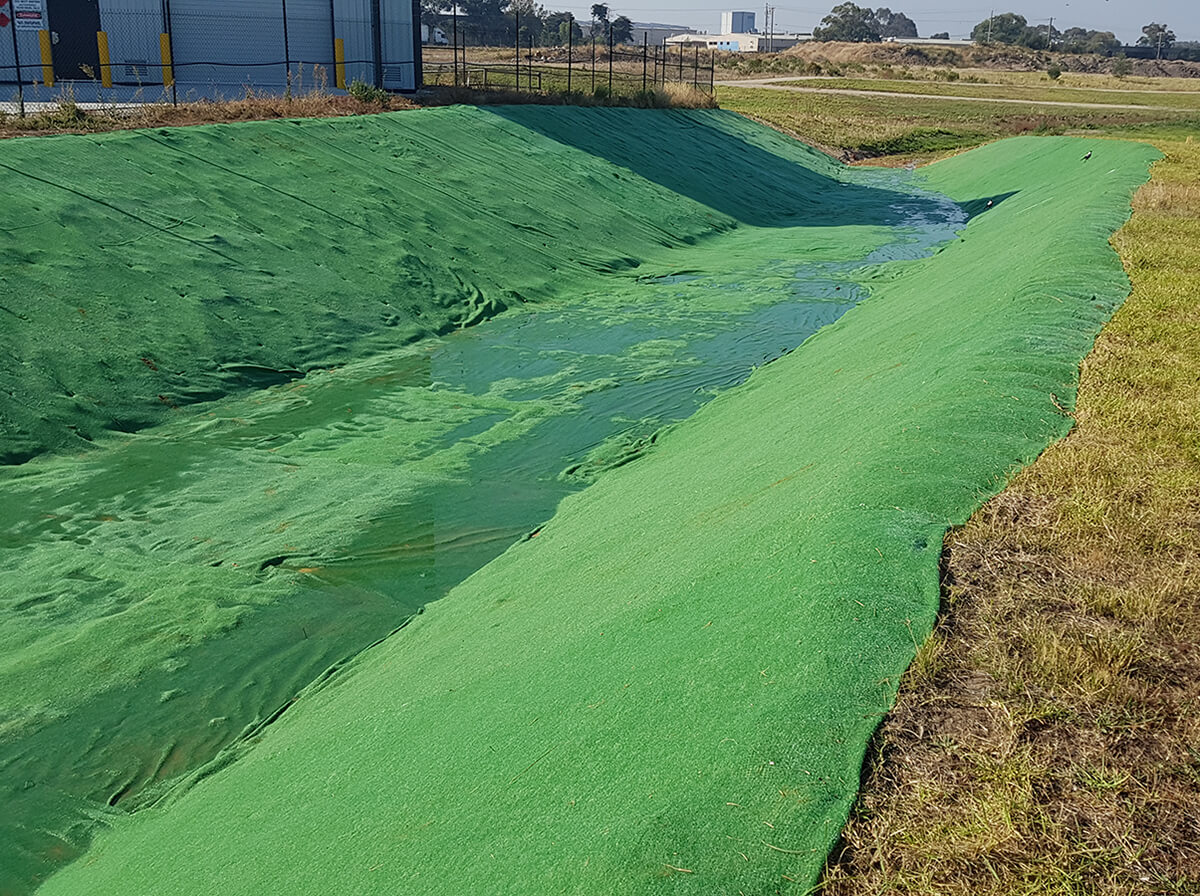Description
TerraMat Grass Turf Reinforcement Mat is a lightweight, three dimensional erosion mat with a similar appearance on both sides, designed to provide permanent erosion control of soil and to reinforce the root system of grasses and vegetation for such areas as slopes, river banks, channels and other erosion prone areas.
Made from uniformly distributed 100% green polypropylene synthetic UV stabilised fibres needle punched together on a scrim. Can be installed within the soil just below the surface or can be placed at the surface and hydromulched. The three layers are mechanically bonded together by needle punching to form the three dimensional TerraMat Grass.
Applications
Designed to provide permanent erosion control of soil and to reinforce the root system of grasses and vegetation for such areas as slopes, river banks, channels and other erosion prone areas.
Structure
The three dimensional structure consists of:
- 150gr/m2 100% UV Stabilised polypropylene fibres
- 65gr/m2 polypropylene Woven scrim
- 150gr/m2 100% UV stabilised polypropylene fibres
The three layers are mechanically bonded together by needle punching to form the three dimension TerraMat Grass.
Installation
Correct installation of TerraMat TRM is critical for a successful outcome.
TerraMat is typically laid by beginning at the top of the slope and rolling the TerraMat down the slope. However, TerraMat Grass can be orientated in different directions to achieve maximum erosion protection depending on site conditions such as direction of river.
The number of joins in the TerraMat should be minimised to increase the integrity and provide the strongest structure. As a general rule, if the degree of slope is greater than 1V:3H it is recommended TerraMatis rolled down the slope. For a slope less than 1V:3H the TerraMat should be rolled across the slope.
Regardless of direction, to ensure effectiveness of the TerraMat it is recommended that the upper edges on top of the embankment are secured in an anchor trench to resist lift and provide direct contact with the soil. If more than one width is required it should overlap the TerraMat previously installed.
Digging should be avoided on slopes to prevent further destabilisation. If the degree of slope is greater than 1V:3H it is recommended the anchor trench be installed at least 1 m from the crest of the embankment.
Specifications
Applications
- Embankments
- Landscaping
- Golf courses
- Erosion control
- Channels

Meet the Team
Raymond Chow has been involved with the geosynthetics industry for over 15 years. Graduating with a First Class Honours degree in Civil Engineering at the University of Sydney, Raymond specialiSes in retaining wall designs, soft ground improvement, channel and slope protection, and on-site storm water management.
Raymond has been on various technical committees addressing geosynthetics, including testing, specification and durability issues.
Join our next session by emailing us at technical@polyfabrics.com.au

